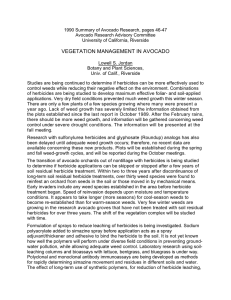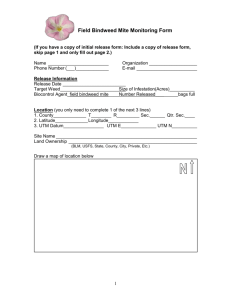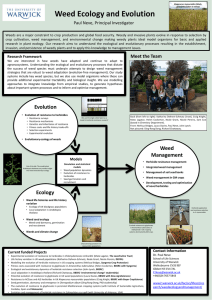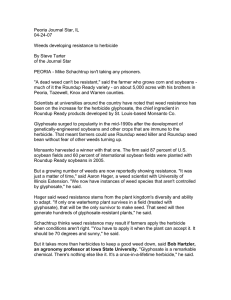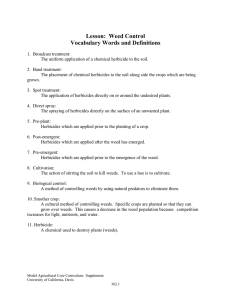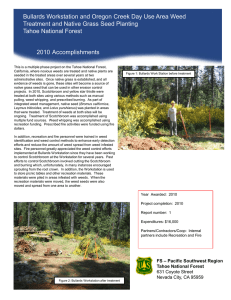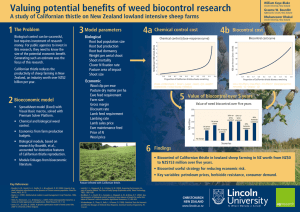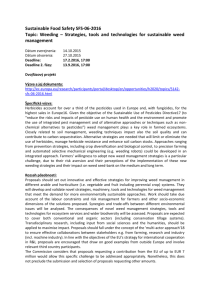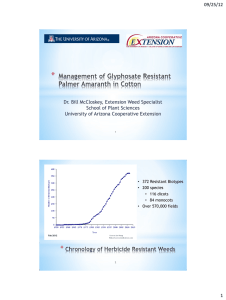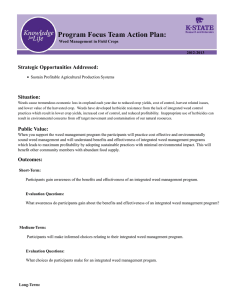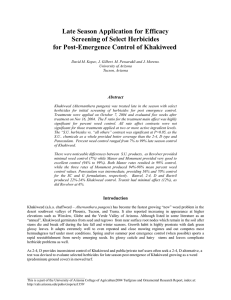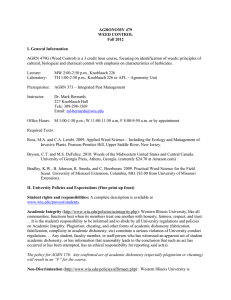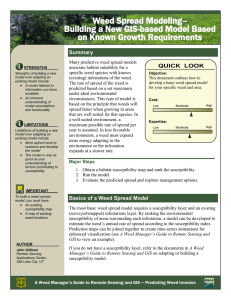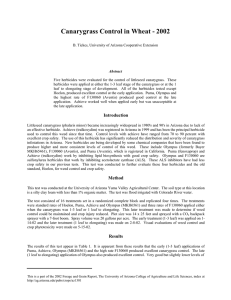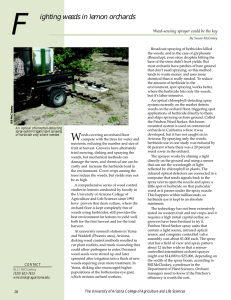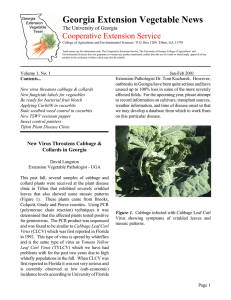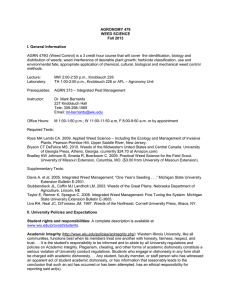Using Herbicides to Manage Noxious Weeds
advertisement
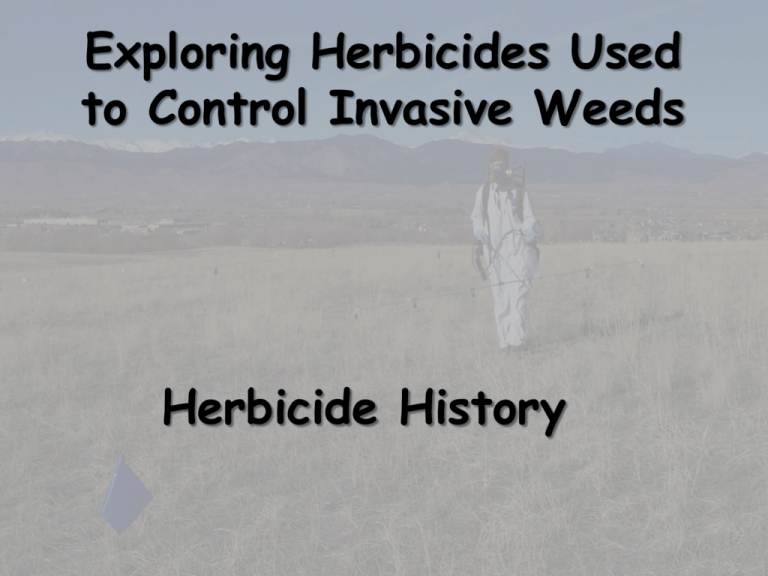
Exploring Herbicides Used to Control Invasive Weeds Herbicide History Chemical Weed Control Chemical weed control • Advanced human ability to manipulate environment to our advantage Herbicide development • Stimulus: realized chemical environment of plant easier to manipulate than climatic, edaphic, or biotic environments in which they grow Herbicide Development Herbicides used to: • Reduce or eliminate labor and machine requirement for ag production • Modify existing crop production techniques • Improve farm efficiency • Reduce horse power and other energy inputs Capacity to do work Obviously remembering herbicides are derived from petroleum Chemical Control History Three ages of agriculture • Blood, sweat, tears period Fatigue, famine • Mechanical age 1701 Jethro Tull; seed drill; horse hoe 1791 Eli Whitney; cotton gin 1834 Cyrus McCormick; Obed Hussey; reaper 1837 John Deere; steel plow • Chemical age Chemical Control History 1200 BC armies salt & ash fields 1000 BC Homer wrote about sulfur & pest control 470 BC Democritus, clear forests w/hemlock juice in which lupine flowers soaked 400 BC Theophrastus, trees killed by pouring oil over their roots Chemical Control History 146 BC Romans sack Carthage & salt crop fields 1st Century BC Cato, amurca (watery residue after oil drained from olives) for weed control 1594 salt used for selective & nonselective weed control 1676 soot used for moss control 1785 soap boiler’s ashes for weed control Chemical Control History 70 AD, 1759 ferrous sulfate known to be phytotoxic 1804, 1821 copper sulfate shown to be phytotoxic 1896 copper sulfate used to selectively control mustards in cereals 1854 salt (NaCl) first recommended in Germany Chemical Control History 1855 sulfuric acid used in Germany in cereals & onions 1865 Bordeaux mixture France in grapes for downy mildew; blackens yellow charlock 1902 sodium arsenite used by Army Corps Engineers for water hyacinth, LA Chemical Control History 1906 carbon bisulfide soil fumigant for thistle and bindweed 1914 petroleum oils used 1923 sodium chlorate first used France for bindweed 1930 sulfuric acid used in England 1932 introduction of first organic chemical weed control; DNOC Chemical Control History 1940 ammonium sulfamate for brush control 1941 Porkony synthesizes 2,4-D 1942 2,4-D growth regulator, not yet reported herbicidal 1944 2,4-D herbicidal properties recognized 1945 MCPA first tested as herbicide Chemical Control History 1946 first reported use 2,4-D for dandelion control in turf 1951 monuron effective grass control 1958 atrazine & paraquat introduced 1960 trifluralin available 1960s pyridines introduced 1971 glyphosate introduced Late 70s sulfonylureas introduced 1980s imidazolinones introduced 2003 pyrimidines introduced Chemical Control Advantages Economic • Primarily due to decreased farm labor Apply in crop rows where cultivation impossible • Also decrease tillage and subsequent injury Preemergence treatments early season weed control Chemical Control Advantages Decrease tillage soil destructive effects • Alterations to soil structure Better perennial weed control • Poorly control by hand labor Decrease fertilizer, harvest, seed conditioning costs Chemical Control Disadvantages Cost • Although least expensive portion of weed management Toxicity Environmental contamination Restrict crop rotation Non-target plant hazard Weed shifts Chemical Control Disadvantages Encourages monocultures Soil erosion – bare ground treatments Over dependence • Tendency to make up for other poor mgmt practices Application expertise & precision needed Pest resistance Inconsistent environmental interactions Waste disposal
